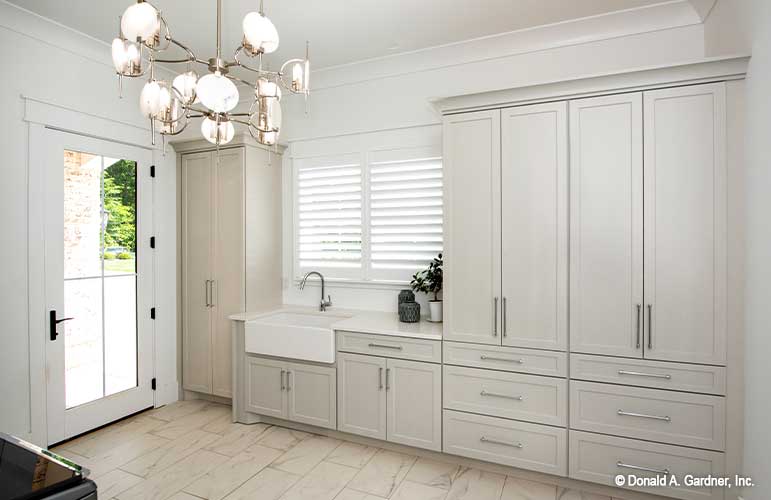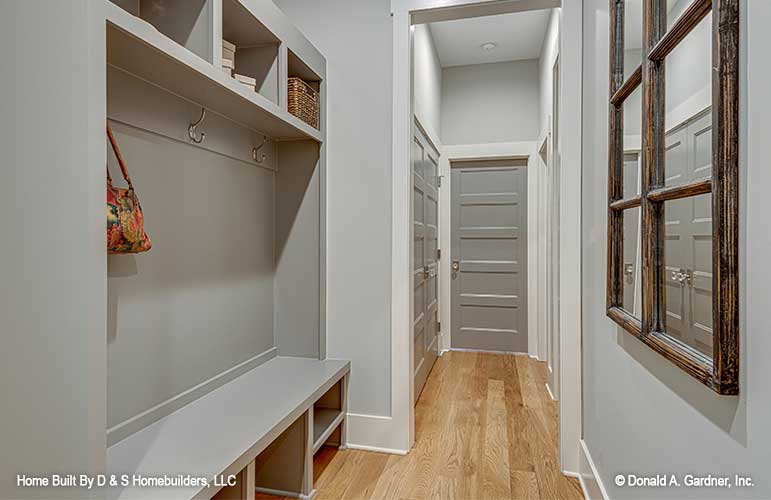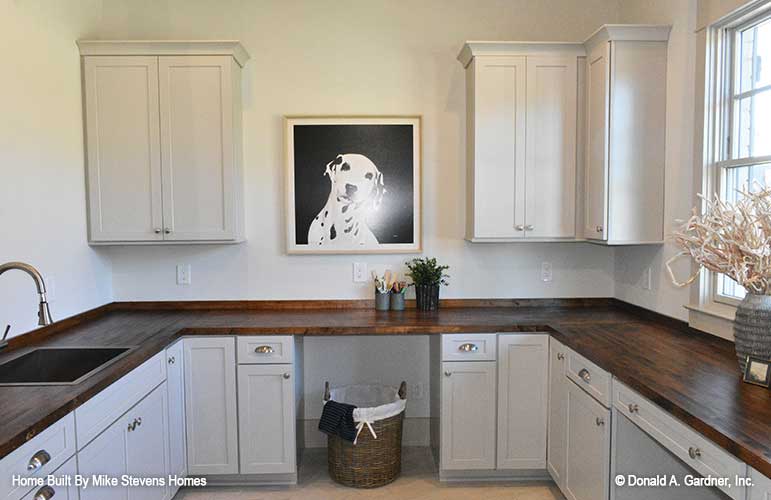Guest Post by: Adriana Lopez - porch.com
Style, Welcoming Ambience, Functionality: Entryway & Mudroom Upgrades for Your Home
In many homes, the entryways need to do double duty, providing a welcoming space to greet guests and to conveniently stow items like outerwear, shoes, and bookbags. If your home has these spaces, you may already be aware of how useful they can be. However, have you outfitted yours for their maximum benefits? These spaces brim with design potential. Whether you need more storage for household items or simply want to create a more attractive area to welcome guests, you can use the following information and tips to revamp your mudroom and entryways to suit your style and household needs.

What’s the Difference between an Entryway and a Mudroom?
More formally known as a foyer or entrance hall, an entryway is a space that is separate from the home’s living space. As you may already know, this area is used for greeting guests, accepting deliveries, or putting on and taking off outerwear. While many homes today feature an entrance that leads directly into the living room or kitchen, more formal or traditional homes may have a small or large foyer. These spaces may feature a closet for coats and jackets or have room to accommodate large furnishings like coat armoires or long foyer tables.
Mudrooms are often less formal than foyers but also larger. Mudrooms are usually located off the kitchen entrance. Often a “casual entrance”, the mudroom operates as a less formal area where the household can remove and stow items like boots and outerwear to avoid tracking in dirt or debris. These spaces may be insulated and heated or could also be dubbed as “four-season” rooms, which are somewhat detached from the rest of the home’s living space. Some people use the mudroom to house their deep freezer, for additional cabinetry, or to perform messy tasks like painting a piece of furniture or completing a child’s art project.
How to Turn Any Space into an Entryway or Mudroom
If you don’t have one of these home features, you may be longing for one or both. Their use as storage areas and as buffers between the home’s living space and the outdoors is extremely helpful. Without them, household occupants (including pets) and guests will inevitably track in debris and mud into the home and threaten to clutter up the living space with their shoes and coats.
Depending on your space, you may be able to create these features, even if your square footage is limited. In order to create them, you’ll need to consider factors such as:
- Location
- Space
- Flooring material
- Doorway
- Fixtures
- Storage features
In many cases, you don’t have to invest in a major renovation to achieve these useful spaces, but you can, of course, build on an addition to your home if you choose to take that route. These features, with their additional square footage and functionality, can increase the value of your home, but you can rely on more budget-friendly options, too, to incorporate a formal entryway or mudroom into your house.

Designing an Entryway
If your front door currently opens directly into your living quarters, you can section off the space to create your foyer, such as by installing a full or half dummy wall to section off the living room from the door entrance. Not only can these features provide the separation you’re looking for aesthetically, but they can also block the hot or cold outside air from circulating into your living area.
Naturally, these barriers will cut into your living space, but they can make your home function better. You can line your new walls with hooks or shelves for storing outerwear. You can devote as much or as little square footage of the room to create this space as you prefer.
Designing a Mudroom
A mudroom may be a bit trickier to design unless you have plenty of space for it. On the other hand, you can transform a back screened-in porch into a mudroom or build one off your kitchen or back entrance. When designing your mudroom, you can build in many storage features as you need, such as bench seating with interior storage or floor-to-ceiling cabinets to organize and store household and home maintenance items like cleaning supplies, paint, or seasonal items.
Storage Ideas for Your Entryway and Mudroom
To achieve a reliably functional space, install built-in features that are tailored to your household’s storage needs. For instance, if you have kids that play equipment-rich sports like hockey or football, build an actual storage locker in your mudroom that can conveniently store these items while allowing for easy access.
When designing your entryway, it would be ideal to include a long coat closet, especially if you entertain frequently. Within this space, you can include storage features like a tall shelf and built-in shoe rack. But if you don’t have the space for a closet, or you’re creating a DIY foyer, opt for a decorative coat rack and open shelving to provide a barrier between your entryway and living room.
When designing your mudroom, you may have more opportunities for creativity when it comes to storage. You can install tall cabinets along each wall or floor-to-ceiling cabinets along a single wall. Make sure you have adequate electricity for the space, particularly if you plan to use appliances in your mudroom, like an extra refrigerator, which is useful in summer when the kids want to come inside for a cool drink, or a deep freezer so you can stock up on food. If your mudroom isn’t heated, consider installing an outlet to run a space heater in case you want to use the room for crafting.
Bench seating with interior storage is useful, because it provides a place for people to sit down to put on or take off their boots, and it can be used to store seasonal items like outdoor toys or garden implements. If you don’t want to include built-ins, visit your nearby home improvement center to find storage units of all types and sizes that could be useful for this space.
If this part of your home does receive heating or cooling like the rest of your house, you could even include cupboards and use part of the space as a pantry, which is useful if you don’t have a traditional kitchen pantry. The mudroom isn’t typically a space that’s designed with guests in mind, so you can truly design it with function rather than style in mind.

Customize These Features to Suit Your Decor and Needs
Not every household formally entertains or is home to children and their toys. Personalize your entryway and mudroom to reflect your intended uses of these spaces. Maybe you need a space to store your 10 totes of Christmas decorations or Halloween decor. Maybe you need a convenient place to store and work on your crafts or special hobbies. There are hundreds of ways you can decorate and customize these areas of your home to suit your aesthetic preferences and needs.
When decorating your entryway, you might add a storage bench or some hanging hooks. You can buy these types of items online or at your nearby home improvement centers. Consider featuring a special work of art or collection of art on your entryway walls. Paint the walls of your entryway a different color than your living room to further delineate the differing spaces. Lighting features and mirrors can also help you create a home entrance that’s both attractive and useful.
When decorating your mudroom, you can choose any aesthetic you like–country cottage or industrial chic. If you have pets, you can transform your mudroom into a pet-friendly space — it’s the ideal place to keep your cat’s litter box or your dog’s food and water bowls.
If your mudroom is near or just off your patio, you can get even more creative with it and install a bar and bistro table. A mudroom makes for a great man cave or sewing space. Your decor can reflect your favorite aesthetic. There are no limitations to how you can use your mudroom. Keep in mind that by adding some terrific built-in features like a wet bar, utility sink, or built-in shelving, you can add to your home’s property value.
As you plan your designs for an entryway or mudroom, consider how you currently use your space and how you can improve upon it with the addition of these new features. It’s also helpful to check out other people’s designs for some inspiration. Whether you’re working with professional contractors or taking the DIY approach to the creation of these spaces, you have lots of options, so be sure to consider them all before making your final plan.





